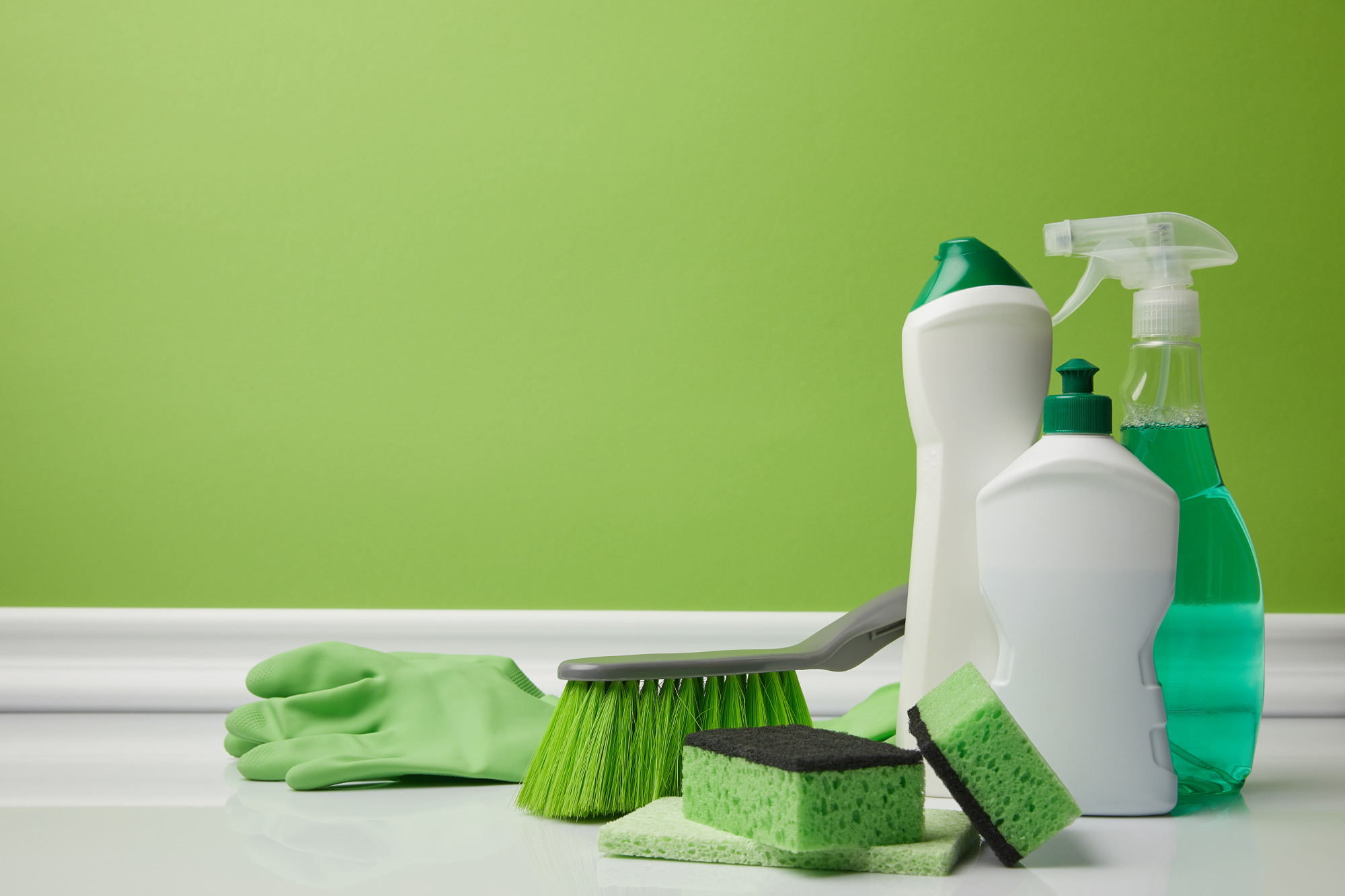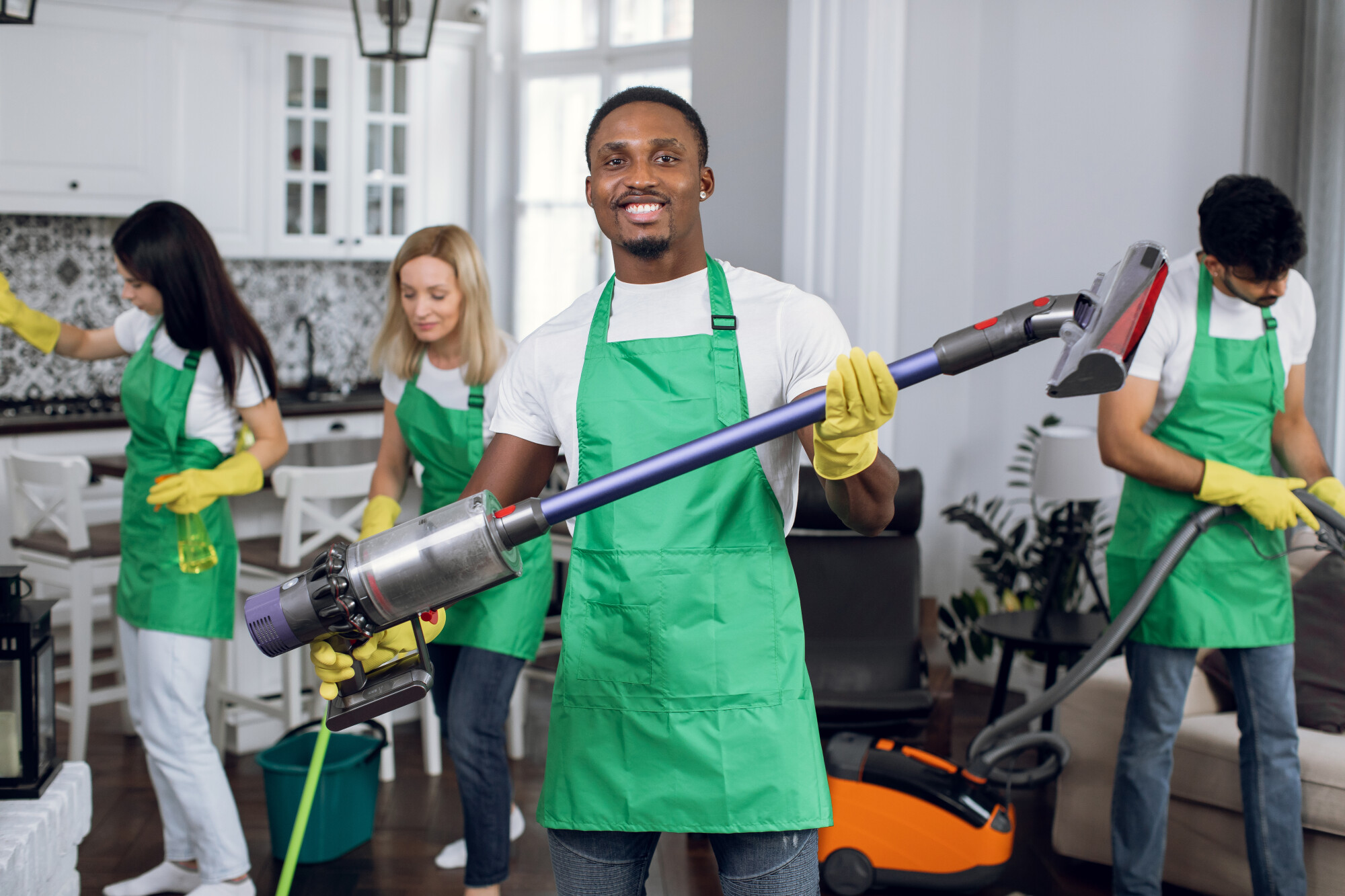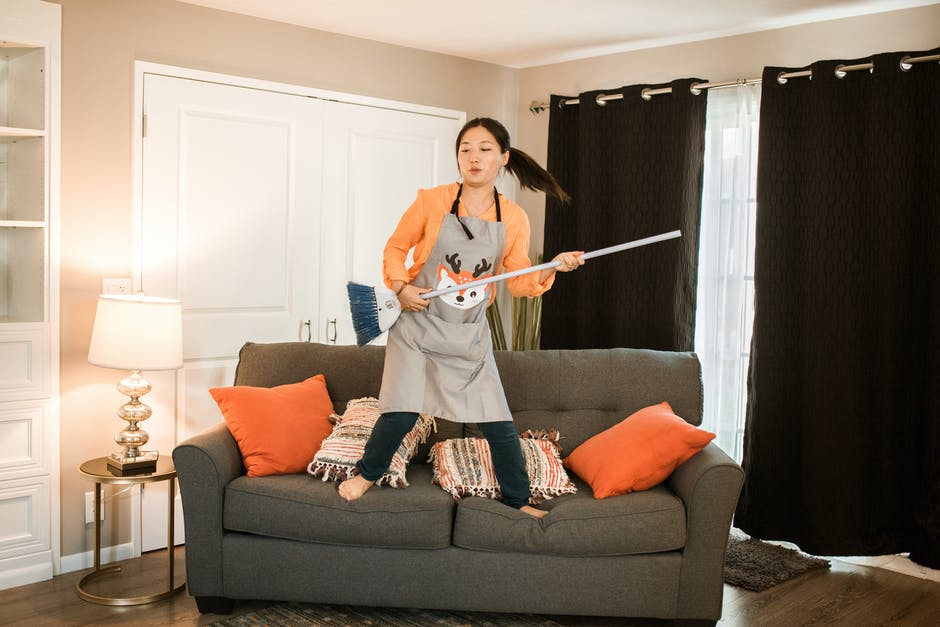A lot of people tidy their house, but are you really cleaning your home?
Giving your kitchen surfaces a wipe down and your carpets a vacuum is great, but it’s still leaving plenty of bacteria to thrive in your home. Areas like behind your toilet and on your cushions could be covered in germs if you’re not cleaning them.
But those are hard to clean spots, so how do you make sure you’re doing it properly?
Take a look at our guide on how to disinfect the hard to clean areas in your home and discover plenty of tricks to make cleaning easy again.
Sanitize vs. Disinfectant
Before getting into the tips, let’s take a look at how you should be cleaning your home. If you’re wondering whether to sanitize or disinfect, the winner is clear; disinfect.
Sanitizing is much more gentle with the aim of killing off some of the germs and bacteria in your home. It’ll reduce the growth of these in your home, but won’t completely get rid of them.
Disinfecting, on the other hand, is designed to kill 100% (or 99.9%) of the bacteria in your house. When it comes to getting rid of germs, disinfecting is the method you should pick.
It’s usually best to sanitize your home more frequently and disinfect when you do a deep clean, or when you think your home is at risk from dangerous bacteria.
What Disinfectant to Use
When it comes to disinfectant, you can head to your local store and check their aisles. Anything that’s labelled as a disinfectant or states that it kills around ‘99.9% of bacteria’ should do the trick. But these aren’t always the best for the environment.
To create a more eco-friendly cleaning routine and free your home – and our water- of chemicals, take a look at more natural cleaning products. You can also use natural items like white vinegar to kill bacteria, leaving your home, body, and the planet much happier.
You can’t always get your hands on eco-friendly cleaning products, but even making a few small changes is better than doing nothing.
Disinfecting Your Cutlery
You probably wash your cutlery a lot, but do you disinfect them? Your knives, forks, spoons, and utensils could be crawling with bacteria – and then you put them in your mouth! Whilst cleaning them normally is great, it can also be good to occasionally give your cutlery a good disinfect.
If you have a dishwasher, put all your cutlery and utensils in. Make sure it’s cleaning at a high temperature of around 140 degrees Fahrenheit and use bacteria-killing dishwasher detergent. If you do this, your cutlery should be free of all the nasty germs.
If you’re washing by hand, wash your cutlery as usual. Use hot water and dish soap, as well as a clean cloth to get rid of any grime. Then, soak your cutlery in a disinfectant that’s non-toxic.
Use something gentle so you don’t damage any of your utensils. After disinfecting, leave your cutlery to air dry and store them in a clean space.
Fabric Disinfectant Guide
Fabric is something we rarely disinfect, but it can be covered in bacteria. In fact, pillows and cushions could be home to over 350,000 colonies of live bacteria! From your curtains to blankets, making sure you get rid of harmful bacteria on fabric in your home is important.
If you can wash your fabrics, put them in the washing machine on a higher heat than usual. If possible add a laundry bleach, or just use a great washing up liquid or powder. Leave them to air dry rather than tumble drying in a well-ventilated area.
If you can’t wash your fabrics, use a disinfecting spray. You can make your own or buy one that’s pre-made. Make sure it doesn’t contain a high content of bleach if you’re using it on colored fabrics.
Spray the disinfectant across your fabrics. Make sure your fabrics stay wet for between 30 seconds and 10 minutes to kill any bacteria. Leave it to dry.
If you want, you can go in with a fragranced spray after disinfecting to add a pleasant, clean scent. This won’t kill germs, but it will make a lovely, cozy home!
Cleaning Light Switches and Door Handles
Door handles and light switches are constantly touched by many hands, but often overlooked when it’s time to clean. This makes them hot spots for bacteria.
You can use a disinfectant spray like those mentioned above for these. Spray it on, make sure it stays wet for around 5 minutes, and leave to air dry. If you don’t like the idea of leaving the disinfectant on, you can wipe it off with a damp, clean cloth.
If you’re worried about using too much liquid on light or electrical switches, use disinfecting alcohol wipes. Look out for biodegradable options to keep your cleaning eco-friendly.
Disinfecting Surfaces That Are Too High
Trying to get to the highest shelf or the top of the cupboard isn’t always easy. Luckily these spots aren’t frequently touched so the chance of spreading germs is much less, but they still need to be cleaned now and then.
Use a sturdy stool or step ladder to make sure you’re high enough and don’t have to strain. If you’re worried, always have someone around who can hold the base steady. Keep your cleaning equipment close by so you don’t have to keep getting up and down.
Use a spray to coat the area, making sure the disinfectant reaches the back. Or, you can soak a cloth or sponge that’s attached to an extendable arm in a disinfectant solution. Use this to reach into all the corners that you can’t get to on your own.
If you’re cleaning cupboards that store food, always use a food-safe disinfectant and rinse the area thoroughly. Leave your cupboard doors open to air dry before re-stocking them.
How to Disinfect Windows
Windows can be very complex to clean. With easily stained glass and lots of hard to reach spots, they’re definitely not the easiest area in your home! But it is important to disinfect them every so often, especially if lots of different hands are opening and closing them.
Follow these steps to clean your windows:
- Begin with a biodegradable disinfectant wipe
- Thoroughly wipe over the whole area, including the glass and surrounding window panes
- Spray white vinegar directly onto the glass – you can add essential oils or lemon juice for a scented spray, and the vinegar smell will disappear after a few hours
- Use a clean paper towel or bamboo cloth to wipe the vinegar say for a clean, streak-free finish
If you have plastic window frames, wipe them over with the same solution or a different disinfectant. For hard to reach areas, use an old toothbrush dipped in disinfectant.
If you have wooden window frames, use a very gentle disinfectant and be sure not to scrub too hard or soak these surface. After cleaning, leave your windows open to make sure everything dries thoroughly.
For more tips on how to remove stains and avoid damage when cleaning windows, take a look at our complete window cleaning guide.
Disinfecting Your Phone and Electronics
You’re probably constantly touching your phone, laptop, and TV remote, but how frequently do you clean them? These can be breeding grounds for bacteria, especially as most people take their phones outside with them. Whatever bacteria you encounter outside can be brought back into your home on your mobile.
To clean electronics, avoid using anything that’s too wet. Moisture and electrical items don’t mix well!
Biodegradable disinfectant wipes are great for this. They’re not too wet, are quick and easy to use, and you can get into all the little spaces. When cleaning items like a TV remote, make sure you clean both the buttons and the spaces in between them.
For phone and laptop screens, use a wipe that contains 70% isopropyl alcohol. These will be gentle enough to not scratch or damage the screen whilst still effectively cleaning. You can also find electronic-specific disinfecting products, so take a look around the web to see what you can find.
Disinfect Behind the Toilet
Cleaning behind the toilet is notoriously hard. But in a room that’s full of bacteria and germs, it’s important you get into every hard to reach area!
When cleaning behind your toilet, wear clothes that you don’t mind getting dirty. You’ll have to kneel on the floor, so use a mat to keep your knees from hurting if you need to. Wear protective gloves, too – no one wants toilet bacteria on their skin!
Start by using your vacuum to pick up any dirt and debris. You might have to switch up the tools of your vacuum head to find the one that works best in your space.
Use a long-reaching tool, like a dish sponge with a long arm. Spray the area thoroughly with disinfectant if you can or soak your tool in a cleaning solution. Scrub the area behind your toilet, making sure you get disinfectant on all the hard to reach spots.
If that doesn’t work for you, use a mop. Change the size of the mop head according to your space – you’ll probably need quite a small size. The longer handle will make it easier to get behind your toilet without having to kneel down and do the dirty work up-close.
Disinfecting a Dishwasher
Our dishwashers clean our cutlery, plates, and other kitchen items – but how do you know your dishwashers clean?
Start by cleaning the outer surface with a regular disinfectant solution. Make sure you use a clean cloth and leave it to air dry.
For the interior, use vinegar to get rid of bacteria and leave your dishwasher spotless. It’ll also cut through any grime and grease in the dishwashers pipes, making for a much better clean. Follow these steps to clean yours:
- Fill one cup with white vinegar
- Place it on the top rack of your dishwasher
- Run your machine on a hot cycle but skip the drying option
- You can also sprinkle baking soda along the bottom of your dishwasher for a deep clean and to remove any odors
Do this once a month to get rid of bacteria and keep your dishwasher functioning at its best. Once it’s disinfected, you can have peace of mind that your kitchen utensils are getting a germ-free clean. Make sure you know what you can put in your dishwasher to make sure you’re making the most of it!
How to Disinfect the Air
Disinfecting the air in your home isn’t easy, but there are ways you can reduce the bacteria you’re breathing in.
To start with, make sure you’re frequently dusting and vacuuming. That’ll help keep your air clearer and cleaner. You should also be sure to follow all of our disinfecting advice to reduce the bacteria in your home to keep it out of the air.
To reduce airborne bacteria, you can find air disinfecting sprays nine. These are an easy way to clean the air in your home. If you have vaporizers in your home, you should also be cleaning these regularly to avoid it spraying bacteria into your air.
Finally, if someone in your home is sick make sure they wear a mask. This can stop the spread of germs when they talk or cough, reducing the chance of their sickness spreading to others.
Discover More Cleaning Tips
At Dirt Busters, creating clean, safe homes is our number 1 passion. We’re a germ-tackling, bacteria-busting team of cleaning experts who can help you transform your home.
If you think you need some professional help, take a look at our cleaning services for homes and offices. You’re guaranteed a deep clean to get rid of any harmful bacteria in your space. If you’re interested, get a free quote today!





